What are the types and varieties of melons
Melon is a popular culture that came to us from Asia. It spread widely in Russia, and now it is successfully cultivated in our country. Therefore, with the onset of spring, summer residents begin to choose varieties for planting. Consider what varieties and varieties of melons are common, how to grow them depending on the growing area, and also how to preserve the grown crop.
The content of the article
Classification of varieties of melons
By ripening period varieties of this culture are divided into early, mid- and late-ripening... Here are examples of each type of melon with photos and names of varieties.
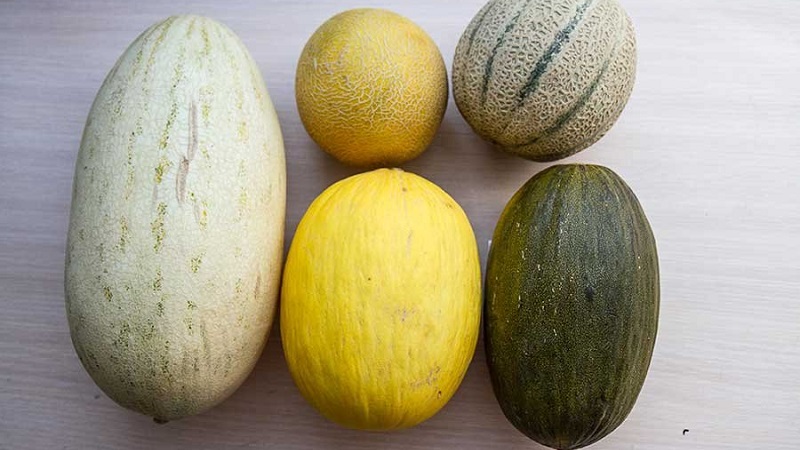
Early
Early varieties sing from 50 to 70 days... They are ideal for planting in areas with short summers, low temperatures and short day lengths.
Sybarite's dream
Melon Dream sybarite is considered a rare Korean variety... The fruit has an unusual greenish color with small emerald stripes. The pulp is white, crispy, with a honey flavor. Fruit weight - from 300 to 700 g.
Dune
Melon Dune - well transported species... Fruits are dark yellow, with a net pattern, oval. The pulp is firm, light creamy, slightly grainy. Weight - 1.5-2.5 kg.
Raymond F1
Melon Raymond f1 - pineapple type hybrid... Fruits are oblong, ocher-yellow, dotted with a net. The pulp is creamy yellow, sweet. Fruit weight - 4-5 kg.
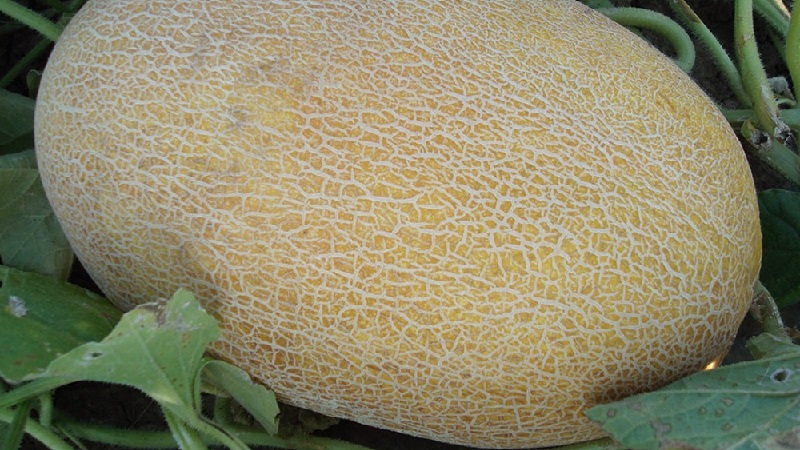
Aikido
Unpretentious, highly resistant to diseases... The crust is rich yellow, dense. The pulp is light green in color, aromatic and sweet. Weight - 2 kg.
Cinderella
The variety is unpretentious, high-yielding, ultra-early maturing... Fruits are elongated spherical, yellow skin with white mesh. The pulp is white or with greenish veins, not sugar, but juicy and aromatic. Weight - 1.5-2.5 kg.
Creed F1
French high-yielding hybrid... The skin is dull yellow with a deep mesh. The pulp is milky, aromatic. Fruit weight - 2-2.5 kg.
Dakaro
Oval-shaped pineapple type hybrid... The peel is bright yellow, covered with spiderweb patterns. The pulp is oily. Weight - 3-5 kg.
Mid-season
Mid-season varieties ripen in 80-90 days... In warmer and sunnier weather, ripening can be reduced to 70-80 days.
Altai
The variety is intended for the Ural, West Siberian, East Siberian regions, as well as other cold locations. The fruit is elliptical in shape with a golden skin, with a small cobweb on the surface. The color of the flesh is creamy or white, sometimes it has a pumpkin flavor. Weight - 1.5-2 kg. According to gardeners' reviews, Altai melon has a low keeping quality and transportability.
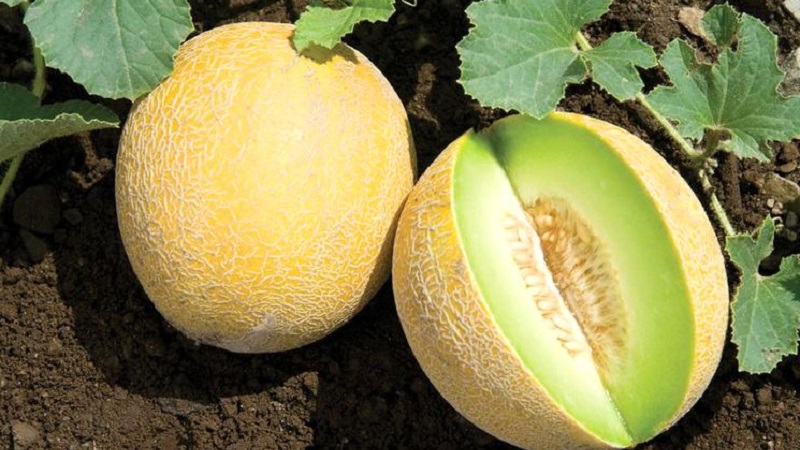
Kazachka
The fruits are oval, the skin is smooth, bright yellow... The pulp is fibrous, white, crunchy. Weight - 1.3-1.8 kg.
Golden
The surface of the fruit is smooth, bright golden, oblong in shape with rounded ends. It arose thanks to Krasnodar breeders. In the context, the flesh is creamy. Weight - 1.5-2 kg.
Black Prince
Melon Black Prince - high-yielding Dutch variety... Oval-shaped fruits are green in color. The pulp is white, juicy. Weight - 4-5 kg.
Amery cream
Fruits are yellow, cream or green... The pulp is white or reddish-white, with pineapple, vanilla and pear flavors. Weight - 2 kg.
Piel de Sapo
Oval melon bred in the Canary Islands... The peel is marsh green, uneven, with cracks. Has a fresh aroma and light creamy taste. Weight - up to 2 kg.
Old lady
The shape of the fruit is round, diameter - no more than 30 cm... Colour Old ladies light yellow or greenish. The rind is thick and firm. The pulp is juicy, watery. The smell is fresh, the taste is melon with hints of cucumber, figs, pumpkin. Weight - 2-3 kg.
Other melon varieties:
What is good about the Kassaba melon, how to choose and grow it
Melon "Vietnamese" with an unusual look and interesting taste
Late
Melons with late ripening completely ripen 95-110 days after sowing... They are stored for a long time (up to six months), have a bright and pronounced taste.
The most delicious are 2 types.
Fig
Fruit weight - from 100 to 200 g, oval shape... The fig melon is orange with yellowish cream stripes. Pumpkin-colored pulp, sweet. Fruit weight - up to 3 kg.
Glory
The peel is smooth, yellow-green in color, with a coarse, solid mesh... The shape is round, the flesh is white, juicy, with a rich sweet taste. Fruit weight - from 1.5 to 4 kg.
Pumpkin-like melon varieties
Of the unusual types of melons, pumpkin-like varieties are distinguished. Some of them even have a characteristic flavor.
Ethiopian
The variety was bred in Russia. Ethiopian it has excellent transportability. The fruits are round oval... The peel is orange or yellow, covered with a fine mesh. The pulp is oily, light honey in color, with a pronounced honey aroma. Fruits can reach 7 kg.
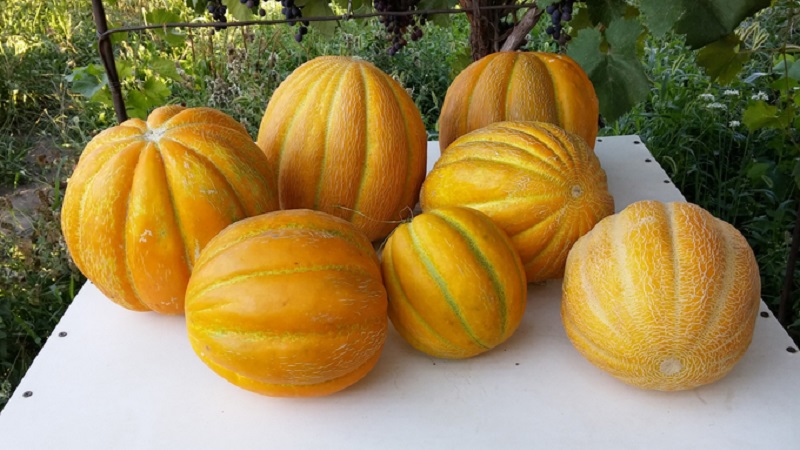
Galileo F1
Resistant to low temperatures... The peel of the fruit is light orange, dense, with vertical dark green stripes. The pulp is fragrant, greenish-white. Fruit weight - up to 1.5 kg.
Ribbed melon
Fruits are large, ribbed, somewhat "plump", of a pale green or yellow shade with orange elements. The pulp is juicy and crunches. The maximum fruit weight is 5 kg.
Varieties of Kuban melons
Several popular varieties have been bred in the Kuban.
Tamanskaya
Fruits are oval, covered with a yellow skin, speckled with cobweb... The pulp is tender, grainy, creamy, with a honey flavor. Weight - 500-1300 g.
Gold of the Scythians
Medium early hybrid, resistant to powdery mildew... Fruits are yellow, oval, with a net. Weight - about 1 kg.
Iroquois
Hybrid with oval fruits, which are covered with a green mesh skin... The pulp is fragrant, dense, yellow-orange in color. Productivity - 6-8 kg / m².
Princess Svetlana
Fruits are roundish, white-cream, without a net... The pulp is milky, sweet. Fruit weight - 1.3-1.6 kg. Productivity - 6.2-6.5 kg / m².
Varieties of green, red, yellow and white melons
In addition to the classic yellow melons, there is a variety of melons on the market, painted in other colors.
Green melons
Mabel F1 is dark green in color. Oval-shaped fruits are dotted with small cracks.
Banana melons look like large, plump zucchini... They have an elliptical shape and a light marsh color, complemented by a yellow mesh. The length of a ripe specimen is from 0.5 to 1 m. It is recommended to grow them in greenhouses.
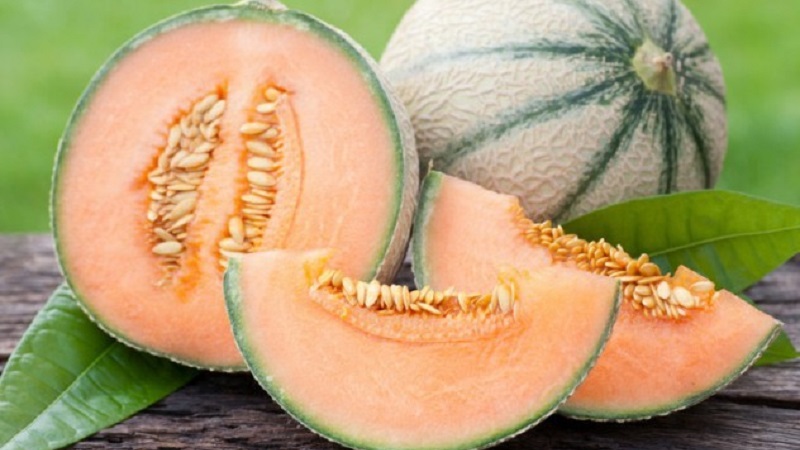
Red
According to some external characteristics, Pineapple melon can be classified as a red... The fruits are red-brown in color with small, upright, dark yellow-orange stripes. Fruit weight - no more than 300 g. The taste of the pulp is similar to the taste of pineapple.
Yellow
This color represents 80% of all melons, and among them there are unusual specimens.
Momordica, or Indian bitter melon
It got its name because of its specific taste. Momordica grows on vines. The fruits are small, elongated, the surface of a rich yellow color is covered with growths... The inner side of the crust is covered with a layer of pulp no more than 1.5 cm wide, and in the cavity of the fruit there are large seeds and a jelly-like mass.
Pepino
The fruits of this variety are slightly larger than a goose egg.... The crust is pale yellow, with stripes of eggplant hue. The pulp is juicy, yellow or creamy. The fruit tastes sweet, with a pear flavor.
White
The few representatives of this category are varieties Princess Svetlana and White Muscat Melon. The latter has a round shape, a smooth creamy white crust. The pulp is juicy, with a greenish tint. It belongs to early maturing varieties, the fruit weighs 1.5-2 kg.
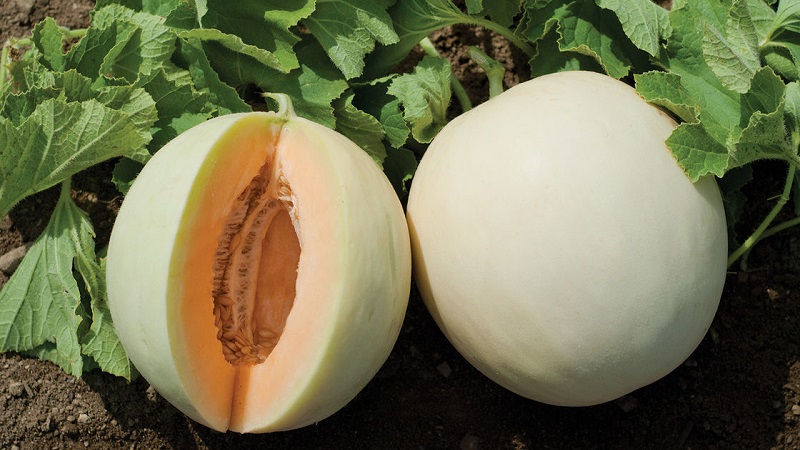
How to choose the right melon variety
The key point in the selection of a melon variety is the purchase of seeds. Basic rules for the selection of seed:
- Melon varieties are selected depending on the climatic conditions in which the plant will be grown. For the middle lane and northern regions, frost-resistant hybrid crops and early varieties are chosen.
- They buy seeds in specialized stores.
- Check that the planting material is certified. The package must indicate: the name of the variety, information about it (size, shape, weight, color of the fruit), information on the scheme and method of planting, harvest time, etc.
- Before planting, the seeds are checked: a few days before sowing, they are soaked and all that have emerged are thrown away, since they will not germinate.
Read also:
Melon growing rules
Melon is a thermophilic culture. Specially bred frost-resistant varieties are grown in Russia in greenhouse conditions and in the open field.
Growing in a greenhouse
Greenhouse cultivation starts with building a greenhouse. It is located on the southern or southeastern side of the site and is made of a special transparent material - polycarbonate or glass.
Hothouse the room is equipped with devices for climbing plants and do not plant other crops there.
The soil in the greenhouse should be moist, loosened and fertilized before planting a crop in the ground. Growing seedlings before planting is not required, the seeds are planted from April to early May immediately in the greenhouse.
Reference.The best varieties for growing in greenhouses are Collective farmer, Lada, Sympathy, Gerda, Canaria, Auger, Amal, Sharena, Galia, Muscat white, Cinderella, Titovka, Star in the garden.
When planting a crop, the soil temperature should be + 17 ... + 27 ° С... It is important to water daily and provide 14-hour daylight hours. For this you can use ultraviolet lamps.
When harvesting, one fruit is picked firstand then, convinced of its maturity, others collect. After that, all plants, weeds are removed and the soil is loosened.

Outdoor cultivation
Growing in the open field differs from the greenhouse at the stage of seed preparation... They are pre-soaked and germinated; when planted in cold regions, they are hardened.
Reference. The process of hardening the seeds is carried out as follows: planting material is wrapped in wet gauze and put into the refrigerator for 12 hours. Then she is placed in a warm place for 12 hours. The procedure is repeated for 3-4 days.
For germination of seed, use cups, containers or peat pots filled with soil. Before sowing, the soil is disinfected with boiling water or a solution of potassium permanganate.
Seeds are immersed in prepared soil 4-5 cm deep... Crops are watered with a small amount of warm water and covered with foil. Germination lasts an average of 5 weeks in good light. Additionally, phytolamps are used, watered daily.
Reference. For growing outdoors in the southern regions and the middle lane, the varieties Titovka, Early 133, Pineapple, Zolotistaya, Kolkhoznitsa, Blondi F1 are suitable. In the northern regions - Dream of sybarite, Cinderella, Altai, Winter.
Melon planting in open ground carried out at a temperature not lower than + 20 ° С... The place should not be shaded. The seedlings are covered with damp newspaper for 2-3 days, periodically removed. Water the culture once a week with warm water.
The soil between the rows loosened after watering or rain.
Fertilize crops three times:
- 2 weeks after planting;
- during the formation of buds on the bushes;
- 20 days after the previous feeding.
Yellowed melons with a grid of cracks are ready for harvest... Fruits that are easily separated from the lash, it's time to harvest.
Melon storage conditions
Early and some mid-season varieties do not store for a long time, they are immediately eaten. Late and mid-season varieties are stored for up to 6 months.
For storage the fruits are removed from the bush together with a stalk at least 30 cm long... The fruits are harvested in the morning or evening. Then leave for 3-4 days on the site, periodically turning over. Then they are stored in a cool, disinfected place, preferably suspended, with an air humidity of no more than 80% and a temperature of + 2 ... + 3 ° C.
Attention! Melons should not be kept next to apples and potatoes.
Conclusion
The future harvest depends on the correct choice of melon varieties. To find a suitable option, they focus on the characteristics of the crop: the ability to withstand low temperatures, drought resistance, fruit taste, keeping quality and transportability. In our country, in different regions, it is possible to grow melons in the open field or in greenhouses.